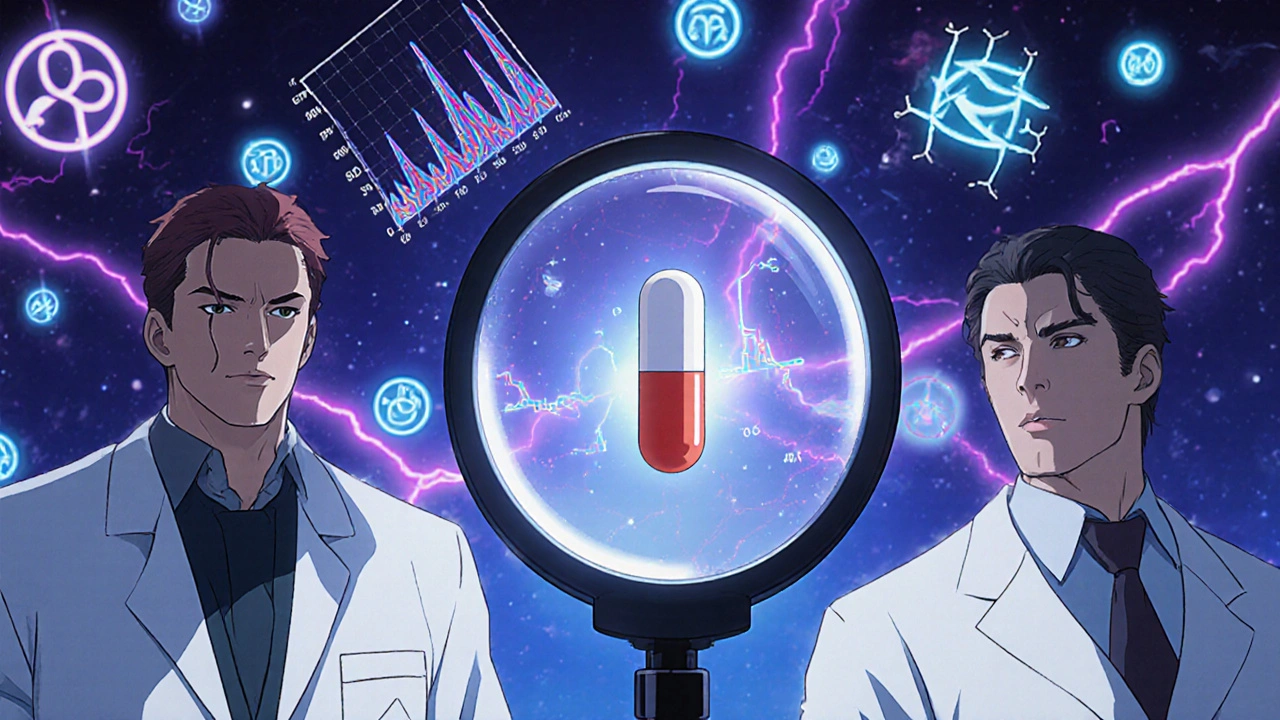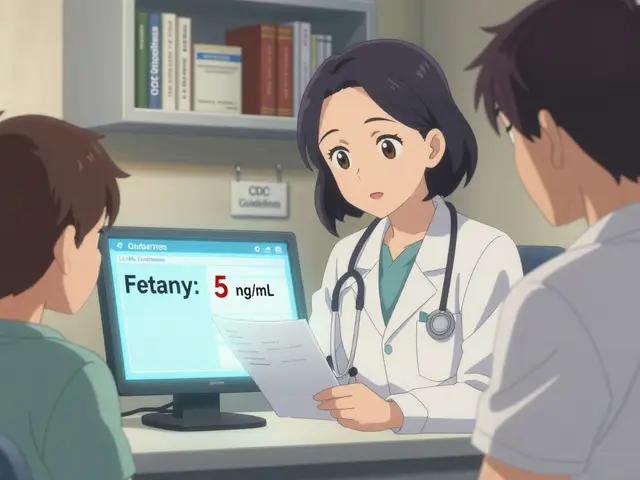Every pill, injection, or inhaler that reaches a patient has passed through one final, non-negotiable gate: batch release testing. This isn’t just paperwork. It’s the last line of defense between a safe medicine and a dangerous one. If a batch fails here, it doesn’t go to pharmacies, hospitals, or homes. It gets destroyed. No exceptions.
What Exactly Is Batch Release Testing?
Batch release testing is the final set of lab tests done on a manufactured batch of medicine before it’s allowed to leave the factory. Think of it like a final inspection on a car before it rolls off the assembly line - but instead of checking paint or tire pressure, they’re checking chemical purity, potency, and microbial safety. Every single batch of every drug - whether it’s a simple aspirin tablet or a complex cancer biologic - must pass this test. This process isn’t optional. It’s written into law. In the U.S., it’s required under 21 CFR 211.165. In Europe, it’s enforced through the Qualified Person (QP) system, where a certified expert must personally sign off before any batch is released. The goal? To prove the batch matches exactly what was approved by regulators: the right strength, the right ingredients, no harmful contaminants, and consistent performance.What Gets Tested? The Core Checks
Each batch goes through a standardized battery of tests. These aren’t random - they’re based on global standards like the United States Pharmacopeia (USP) and ICH guidelines. Here’s what’s always checked:- Identity: Is this actually the drug it claims to be? Tests like HPLC or FTIR confirm the chemical structure matches the approved formula.
- Assay/Potency: Does it contain the right amount of active ingredient? Acceptable range? Usually 90-110% of the labeled amount. A 10% drop in potency could mean a patient gets no benefit. A 20% spike could be toxic.
- Impurities: Are there unwanted chemicals? ICH Q3 guidelines set strict limits - like 0.10% for unknown impurities in new drugs. Even tiny amounts can cause allergic reactions or long-term damage.
- Microbial Limits: Is it clean? For non-sterile products like oral tablets, the limit is 100 colony-forming units per gram. For injectables? Zero tolerance for bacteria or fungi.
- Endotoxins: Especially critical for injections. Endotoxins from dead bacteria can trigger deadly fever responses. Limits are as low as 5.0 EU per kg per hour for spinal injections.
- Dissolution: Will the pill break down properly in the body? Generic drugs must match the original brand’s dissolution profile (f2 similarity factor ≥50). If it doesn’t dissolve, it won’t work.
- Physical Properties: Tablet hardness (4-10 kp), capsule seal integrity, particulate matter in injections (no more than 6,000 particles ≥10μm per mL).
Stability Testing: Making Sure It Lasts
A drug isn’t just tested for what it is today - it’s tested for what it’ll be in six months, a year, or three years. Stability testing simulates real-world storage conditions: 40°C and 75% humidity for accelerated results, and 25°C and 60% humidity for long-term tracking. This tells manufacturers how long the drug stays safe and effective. For example, a vial of insulin might be tested at 0, 3, 6, 12, and 24 months. If potency drops below 90% at 18 months, the expiration date gets cut to 12 months. This isn’t guesswork. It’s science backed by data.
The Human Factor: Who Signs Off?
In the EU, no batch moves without a Qualified Person (QP). These aren’t just lab technicians. They’re senior professionals with at least five years of GMP experience and formal certification. They review every single test result, production record, and deviation log. One mistake, one overlooked anomaly, and they can’t sign off. In the U.S., it’s the Quality Unit - a team of trained professionals who independently verify results. At least two analysts must review critical data. That’s not redundancy for show. It’s a failsafe. In 2023, the FDA reported that 83% of batch failures happened because of issues in dissolution, impurities, or microbial contamination. Many of those could have been caught earlier - if not for human error or rushed reviews.What Goes Wrong? Real Failures
Batch release testing catches problems - but not always fast enough. In 2023, a major manufacturer released 12,000 vials of a monoclonal antibody that were underpotent. Why? Inadequate review procedures. The batch passed initial tests, but the data wasn’t properly cross-checked. The result? A $9.2 million recall and an 18-month import alert. Other common failures:- Method transfer issues between R&D and manufacturing - 78% of QC analysts say this causes delays, averaging 14.7 business days to fix.
- Data integrity problems - missing chromatograms, altered digital records, or unverified calculations.
- Deviation investigations that are superficial or incomplete.

How Technology Is Changing the Game
Some companies are moving beyond manual reviews. Integrated Laboratory Information Management Systems (LIMS) are cutting batch release times by 22%. Thermo Fisher’s SampleManager is used in 41% of these success stories. AI-driven predictive release testing is emerging. Companies using it report 34% fewer batch failures. But here’s the catch: regulatory approval for AI methods takes 18 months. Only 12 U.S. companies qualified for the FDA’s 2025 Predictive Release Testing pilot as of October 2025. New guidelines like ICH Q14 (effective Nov 2024) let manufacturers use risk-based approaches. For well-established products, some tests can be reduced - if they can prove the process is rock-solid. That’s saving time for some, but not all.Why This Matters to You
You might think, “I just need my medicine to work.” But behind that pill is a system built to protect you. Batch release testing prevents recalls, avoids toxic batches, and ensures every dose you take is exactly what it says on the label. It’s why a generic drug from India or a biologic from Germany can be trusted in Australia, Canada, or the U.S. - because the same standards apply. Global harmonization means your safety isn’t tied to where you live. It’s also why drug prices keep rising. Testing has gotten more complex, especially for biologics. Costs have jumped 22% since 2020. But that’s the price of safety.The Future: Less Testing? Or More?
There’s a big debate. On one side: continuous manufacturing and real-time monitoring could one day replace batch testing. The FDA’s pilot program is testing this. On the other side: regulators still demand discrete batch verification. A 2025 ISPE survey found 97% of industry experts believe some form of batch testing will still be needed through 2040. Why? Because even the most automated systems can’t guarantee 100% consistency across millions of units. Humans still need to look at the data. Machines still need to be validated. The future isn’t about eliminating batch release testing. It’s about making it smarter - faster, more accurate, and less prone to human error. But it will remain the final gate. Because when it comes to medicine, there’s no room for compromise.Is batch release testing required for all types of medicines?
Yes. Every batch of every drug - whether it’s a simple tablet, an injectable, a vaccine, or a complex biologic - must undergo batch release testing before distribution. The specific tests vary by product type, but the requirement does not. Even over-the-counter medications and generics are subject to the same standards.
How long does batch release testing usually take?
It depends on the product. Small molecule generics typically take 7-10 days. Complex generics, like those with special delivery systems, take 14-21 days. Biologics - such as monoclonal antibodies or gene therapies - can take 21 to 35 days due to more complex testing, including cell-based assays and stability studies under multiple conditions.
What happens if a batch fails release testing?
The batch is rejected and quarantined. It cannot be sold, distributed, or used. Depending on the failure, it may be reprocessed (if allowed by regulatory guidelines), repackaged, or destroyed. The company must investigate why it failed, document the root cause, and take corrective actions to prevent recurrence. If the batch was already shipped, a recall is initiated.
Can AI replace human reviewers in batch release testing?
AI can help analyze data faster and flag anomalies, but it cannot replace human reviewers - at least not yet. Regulatory agencies require final certification by trained professionals. AI tools are used as decision-support systems, not standalone approvers. The FDA and EMA still demand human oversight for sign-off, especially for high-risk products.
Why is there a shortage of Qualified Persons (QPs) in Europe?
The EU requires QPs to have at least five years of GMP experience and formal certification. Training is lengthy, and demand has surged with the rise of biologics and new manufacturing technologies. The EMA reported a 32% shortage of qualified QPs in 2024, causing delays in batch releases and bottlenecks in production timelines across the region.
Are batch release testing standards the same worldwide?
Most major markets - the U.S., EU, Japan, Canada, and Australia - follow harmonized guidelines from ICH and USP, so standards are very similar. However, some differences exist. For example, the EU mandates full testing for every batch, while the FDA allows reduced testing under continuous manufacturing with proven process control. China now requires batch release for imported vaccines, adding extra steps for global manufacturers.





Comments (9)